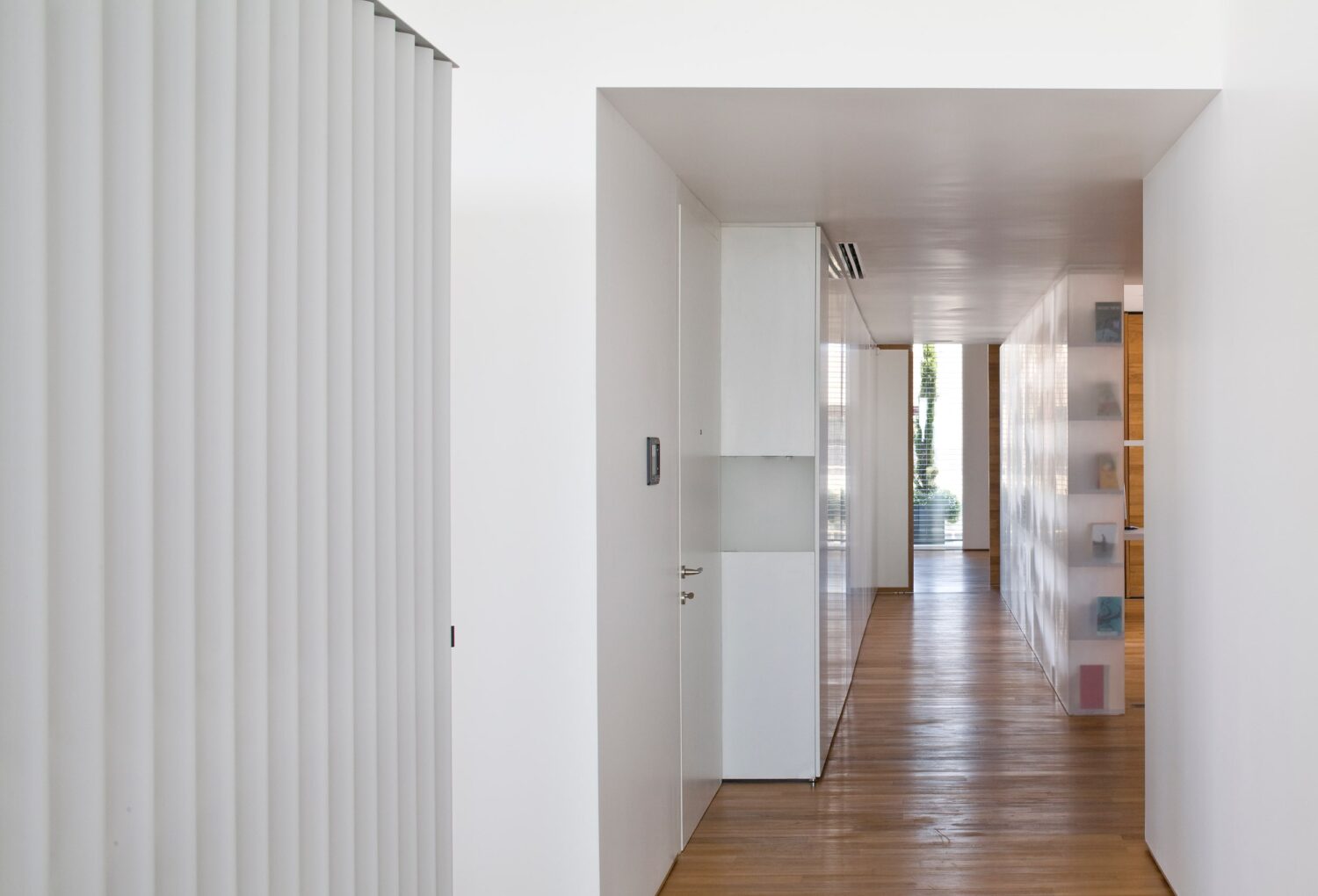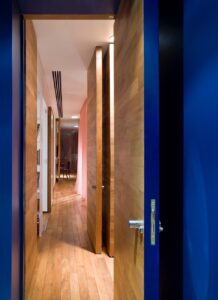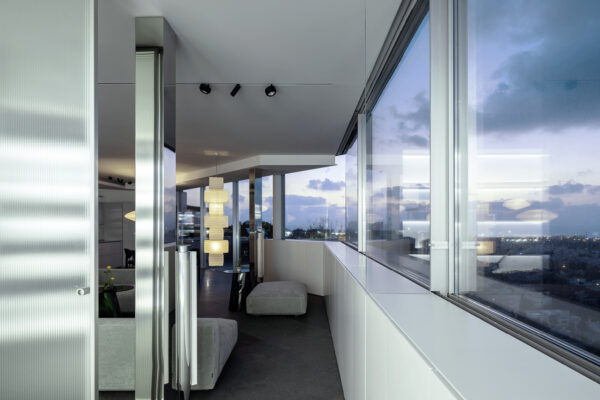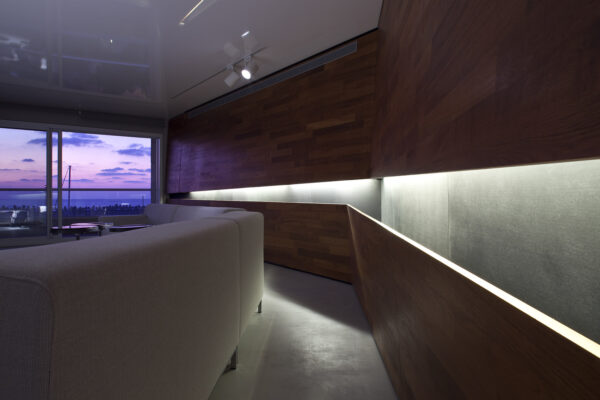When a cloud passes and disappears it is quickly forgotten while another passes overhead in another form taking its place. The texture of the sky is the mobilization of infinite details whose interweaving constantly changes.
Living among the clouds is a constant act of reverence to the transience of the atmosphere; one sensation is quickly transformed into another, into the no-form of the sky.
Location
Ramat Aviv
Total floor area
620 m2
N. of floors
1
When a cloud passes and disappears it is quickly forgotten while another passes overhead in another form taking its place. The texture of the sky is the mobilization of infinite details whose interweaving constantly changes. Living among the clouds is a constant act of reverence to the transience of the atmosphere; one sensation is quickly transformed into another, into the no-form of the sky. The I/S house is an attic in a tower by the sea, a glass element that overlooks four different kinds of landscape: the city of Tel Aviv rises vertically; the open sea with its endless horizon lies to the west; to the east and north there is a low cityscape of four-storied buildings; which then fragment into the more distant, flat landscape with its indefinite, hilly terrain.
The surrounding urban scene is one in a constant state of reconstruction; it consists of superimposed views of rapidly growing skyscrapers and landing points, of chaotic zones of roofs and fragments of sub-spaces between buildings of all ages, and empty sites. The attic is a 600 sqm space and meets the client’s request for a house in the sky, in which one does not feel as if one is inside an ordinary apartment. The sky is the garden of the house, and the surrounding terraces are treated as extensions of the interior passages.
Nothing has been hidden. Circulation is around the innermost areas of the tower where the central service block is located. By creating opaque walls/filters and objects we have tried, as far as possible, to maintain physical and visual communication with the sky, even in the area furthest from the central block. Life in this space has been organized around the various activities of the couple who occupies it. Social life takes place in the volume overlooking the upper city. Objects such as sofas and tables are flexible and can be adapted to the couple’s various entertainment needs. The lighting and the couple’s private collection of tiny objects, schmonzes, become mobile mini-landscapes superimposed on the windows and the exterior. The music room, to one side but visually linked to the living room, is a hidden and private niche. The dining/kitchen area is visually related to the living room and allows a view of the open sea, a view also seen from most of the house. The owners’ wing of the apartment, however, is independent and distant.
The house has various emotional centers and the distance between them is articulated by the various white textures of the ceiling and the walls, as well as by the incision between the latter and the floor which is highlighted by a slender blade of wood.
The private rooms have different gradations of color that follow the psychological implications of the space and the chromatic inflection of the sun, at their maximum at dawn and at sunset.
The sensuous aspect of the substances and textures chosen was completely conditioned by its relationship to light. The various layers of shutters and visual filters act as intermediaries for the lengthy window and soften the psychological and climatic conditions of excessive light.
Location
Ramat Aviv
Total floor area
620 m2
N. of floors
1












